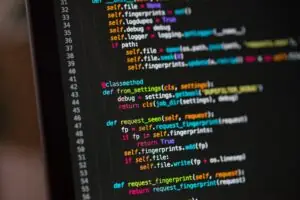In the journey of mastering programming languages, learning C holds a pivotal place due to its foundational role in the development of software and systems. This article delves into an essential aspect of C programming: the use of new lines, or line breaks, and their significance in creating readable and well-structured code. Understanding how to effectively implement new lines and escape sequences in C can elevate your coding skills and enhance your grasp of this powerful language.
The Importance of New Lines in C
New lines, represented by the \n escape sequence in C, are crucial for several reasons. They help in formatting output to the console, making it more readable and organized. Line breaks, or line terminators as they are sometimes called, signal the end of a current line and the beginning of a new one. This is not just about aesthetics; in programming, clear and readable code is as important as the code’s functionality. For beginners embarking on their journey through various tutorials, from HTML basics to mastering complex CSS frameworks like W3.CSS or even tackling dynamic languages like JavaScript, understanding the simplicity and necessity of new lines in C is a fundamental step.
Escape Sequences: More Than Just New Lines
Escape sequences in C, such as \n for new lines, play a vital role in handling special characters within strings. These sequences allow programmers to include control characters in strings that would otherwise be difficult to express directly.
For instance:
-
\tfor a tab,\bfor a backspace, or\\to represent a backslash itself. - These escape characters are essential tools for string formatting, enabling the creation of well-formatted and understandable output.
Just as CSS tutorials teach the styling of web elements and JavaScript tutorials delve into adding interactivity to web pages, escape sequences in C provide the means to control the formatting of text in a program’s output.
Learning C: Mastering New Lines and Escape Sequences
When studying C through tutorials, mastering the use of new lines and escape sequences is crucial. This understanding not only aids in formatting output but also in reading and processing input files. For example, when reading a text file line by line, recognizing the newline character is essential for correctly parsing the file’s contents.
In tutorials focused on HTML, CSS, or JavaScript, learners are guided through the steps of creating web pages, styling them, and adding functionality. Similarly, a tutorial on C emphasizes the syntax and structure of the language, including how to use escape sequences to manage special and control characters effectively. As one progresses to more advanced topics, such as SQL for database management, Python for general-purpose programming, or PHP for server-side scripting, the foundation laid by understanding basic concepts like new lines in C becomes invaluable.
Practical Applications and Examples
Consider the task of creating a simple C program that outputs a formatted table of data. Without the use of new lines (\n) and tabs (\t), the output would be a continuous line of text, difficult to read and understand. By incorporating escape sequences, the data can be presented in a structured and appealing format, greatly enhancing readability.
Furthermore, in file operations, new lines are essential for delineating records or entries, making data manipulation and analysis more straightforward. Whether it’s reading from or writing to files, the correct handling of new line characters ensures data integrity and usability.
Challenges and Solutions
Despite their utility, working with new lines and escape sequences can present challenges, especially for those new to C programming. One common issue is the platform-specific nature of line terminators. For instance, Windows uses a combination of \r\n to denote new lines, while Linux and Unix use \n, and MacOS (prior to OSX) used \r. This discrepancy can lead to issues when transferring text files between systems.
To address this, programmers must be vigilant and possibly implement checks or conversions to ensure their programs work correctly across different operating systems. Tools and functions in C, such as the fopen function with the "b" modifier for binary mode, can help manage these differences by treating all files equally, without special processing for new line characters.
Conclusion
The use of new lines and escape sequences in C is a testament to the language’s flexibility and depth. As learners progress from basic tutorials in HTML and CSS to the complexities of JavaScript, SQL, and beyond, the principles learned from mastering new lines in C form a solid foundation for understanding more advanced programming concepts. Whether formatting output for clarity, parsing input files, or ensuring cross-platform compatibility, the effective use of new lines and escape sequences is a skill that enhances a programmer’s ability to create efficient, readable, and portable code.
In the grand scheme of learning programming, the journey from understanding the basics of HTML to the intricate details of programming languages like C underscores the importance of a solid foundation. As tutorials in various languages, from Python to PHP, continue to guide learners through the intricacies of coding, the role of fundamental concepts like new lines in C remains ever-relevant, bridging the gap between simple scripts and complex applications.
FAQ
Follow us on Reddit for more insights and updates.





Comments (0)
Welcome to A*Help comments!
We’re all about debate and discussion at A*Help.
We value the diverse opinions of users, so you may find points of view that you don’t agree with. And that’s cool. However, there are certain things we’re not OK with: attempts to manipulate our data in any way, for example, or the posting of discriminative, offensive, hateful, or disparaging material.